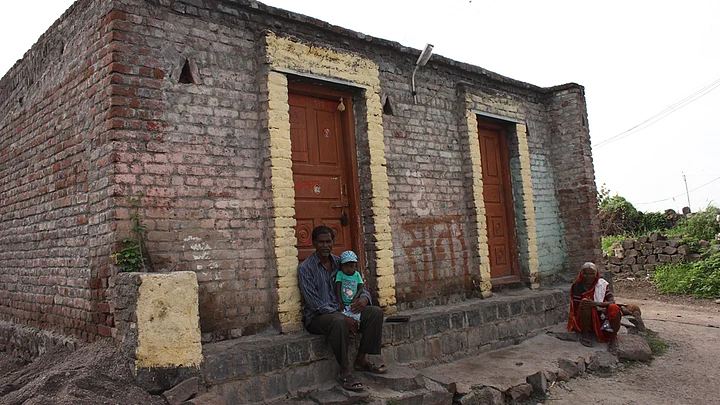Spells of rain, each lasting a few hours over the past couple of weeks, have encrusted Marathwada’s table top hills with patina, the colour of copper oxide. On Friday, September 18, it rained from 7 pm till 9 am. Travelling from Aurangabad to Parbhani, through Jalna, one saw gushing waters and swollen streams.
From the beginning of June till 16 September, eight districts of the region received 2,750 mm of rain, or 64 percent of the normal. The deficit for the region was 36 percent, but ranged from 58 percent in Parbhani to 30 percent in Aurangabad. Then on just one day, September 18, Parbhani for instance, received 57.4 mm of rain, or nearly a fifth of the total rainfall it received this season.
This illustrates how erratic the weather has become. The whole of July, which is crucial for crops, was almost dry. Rains this month have erased evidence of the drought’s severity. As one drove along the forested roads of Patoda taluk in Beed district – one of the hottest places in India in summer – and up its billiard cloth slopes, it was hard to believe this region was parched. Nature seemed to be covering up for the truancy of the monsoons.
Green shoots over Marathwada concealed symptoms of distress. There were signs of trauma in the yellowing soyabean; their growth arrested at ankle-length when the crop should have been waist-high. Unlike jowar and tur which can bear water deprivation up to a month, soyabean wilts in light porous soils within a fortnight. Cotton plants that should have grown to about five feet were stunted to about a foot and a half. Each of them had about five bolls; healthy plants have ten times that number. Weeds have overgrown fields sown in June, as farmers abandoned them to cut losses. But ‘tur will be winner’ because of late rains, says B Venkateswarlu, vice-chancellor of the agricultural university in Parbhani.
The weather has broken the resolve of even the most resilient. Prahladrao Kadke, 61, of village Sarangpur in Ambad taluk of Jalna district, says he has spent Rs 25 lakh on tanker water to save his orchard – 2,000 trees each of pomegranate and citrus spread over 20 of his 45 acres. A farmer known to aggressively chase profits and new practices, he says he spent an equal amount in 2012-13. Horticulture used to be quite profitable in the past. With annual income of about Rs 20 lakh, Kadke has built an elegant house and got his children professionally educated.
‘Since 2012 I have never had a good crop,’ he says. He has installed drips and uses water sparingly. Since mosumbi trees take seven years to fruit, he is torn between sinking more money to replace dried-up ones, or giving it all up and partnering with his MBA-qualified son, to export pomegranates to the Emirates.
Balasaheb Kakde, who had an agro-input dealership at Ramnagar, about 15 km from Jalna town, says business in cotton and soyabean seeds was brisk owing to good initial rains, but failure of monsoons thereafter has dried up demand for fertiliser and chemicals. ‘They are lying in the godown just like I purchased them,’ he says. 70 percent of Kakde’s business is on credit, which gets repaid after harvests in October and February. ‘Dealers are in greater trouble than farmers,’ he asserts.
Late rains have eased the shortage of drinking water, but many villages are still not in the comfort zone. According to news reports 1,249 tankers were in service as of September 10. Their number was reduced to 815 as of September 21. The water was being supplied at government expense.
Crop failure and loans contracted at high rates have caused a rash of suicides. We came across two cases within a distance of 15 km in Shirur taluk of Beed district. Sanap Bhanudas Satwaji, 60, of Hivarshinga village, hung himself to death. Mithuramnath Vigne, 35, of Anandgaon vasti, immolated himself. According to The Indian Express, there were 628 cases of suicides in Marathwada till the middle of this month, from 574 in 2014. The figures could not be independently confirmed.
Though this is supposed to be one of the worst droughts in Marathwada, distress is perhaps not as acute as in the past. Drinking water and fodder were the stress points, not so much a lack of food grain. The availability of work in cities outside the region acts as a shock absorber. Migration is an annual event here; the drought has aggravated the flow. With further spells of rain forecast, farmers were looking forward to a good rabi season. But they will have to rethink cropping patterns to be able to beat the erratic weather.
(The writer is consulting editor to www.smartindianagriculture.in)
(At The Quint, we question everything. Play an active role in shaping our journalism by becoming a member today.)
